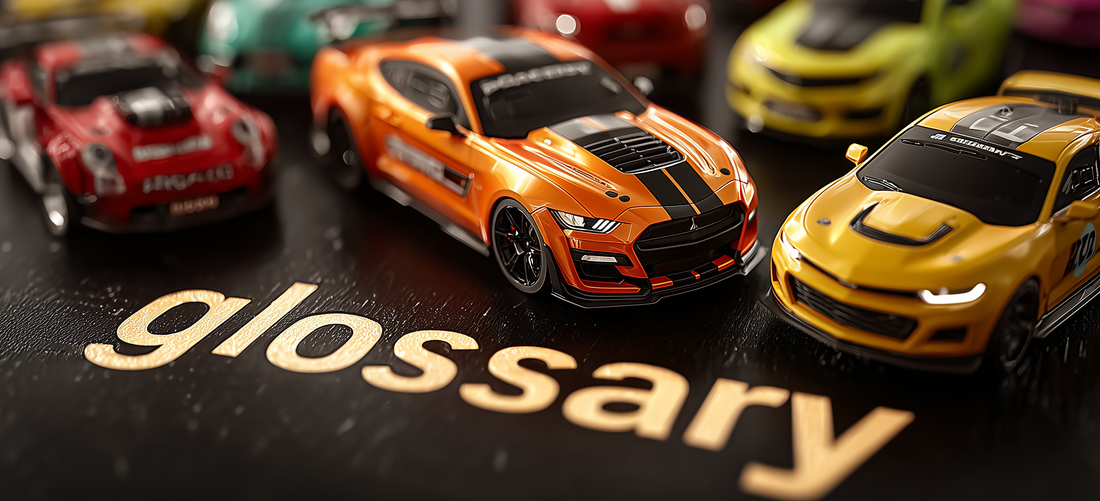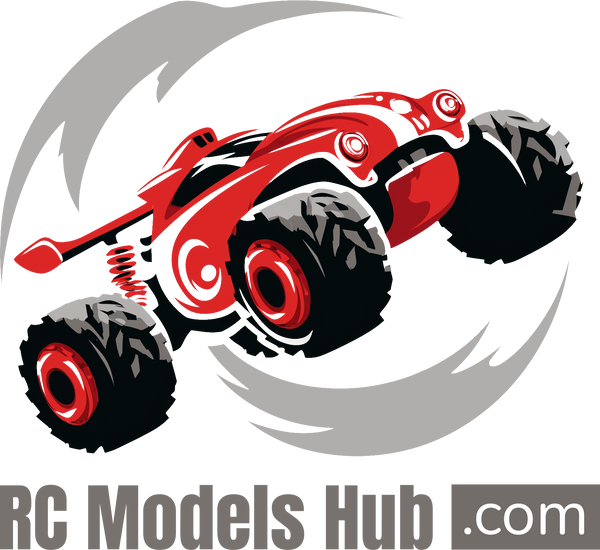
RC Car Glossary: A Beginner-Friendly Guide to RC Terms
Share
Whether you're just getting into the world of remote control (RC) cars or you've picked up your first model, it's easy to get overwhelmed by the terminology. This glossary breaks down the most common RC terms and acronyms in simple, easy-to-understand language, so you can feel confident navigating your RC hobby.
2WD / 4WD
2WD (Two-Wheel Drive) means power is sent to only two wheels—either the front or rear—making these models simpler and usually more affordable. 4WD (Four-Wheel Drive) RC cars send power to all four wheels, offering superior traction and control, especially useful for off-road terrain or racing conditions.
Brushed / Brushless Motor
Brushed motors are entry-level motors that use physical brushes to transfer power. They're cost-effective, easier to maintain, and great for beginners. Brushless motors are more efficient, provide better speed and torque, and require less maintenance due to the absence of brushes, making them ideal for more experienced users.
Binding
The process of electronically pairing your RC car’s receiver with the transmitter (remote control). Some models come pre-bound, while others require manual binding, which usually involves holding a bind button during power-up.
Battery Types: NiMH / LiPo
NiMH (Nickel-Metal Hydride) batteries are more forgiving and safer to use, making them suitable for beginners. LiPo (Lithium Polymer) batteries offer higher power-to-weight ratio and faster discharge rates, leading to better performance, but they require more careful charging and storage to prevent damage or fire.
Chassis
The foundational frame or platform of your RC vehicle. The chassis holds all key components such as the motor, suspension, drivetrain, and battery. Chassis designs differ based on the type of vehicle—on-road, off-road, crawler, etc.—and can be made of plastic, metal, or composite materials.
Controller / Transmitter
The handheld device you use to operate the RC car. Most modern transmitters use a 2.4GHz frequency to avoid interference and allow multiple cars to run at the same time. It usually includes throttle and steering controls, as well as trim settings for fine adjustments.
Drift Car
An RC drift car is designed to slide intentionally around corners with style and control. These cars often come with hard rubber or plastic tires and stiffer suspension setups, making them suitable for smooth, paved surfaces like drift tracks or indoor circuits.
Differential (Diff)
The differential is a key component in the drivetrain that allows wheels on the same axle to spin at different speeds. This helps the car maintain better grip and smoother turns, especially on uneven or curved surfaces. RC cars can have front, rear, or center differentials, depending on their design.
ESC (Electronic Speed Controller)
An ESC manages the power going from the battery to the motor, allowing for speed control and braking. Brushed ESCs are designed for brushed motors, while brushless ESCs are paired with brushless motors. Some ESCs are programmable and may offer multiple driving modes.
Foam Inserts
Foam inserts are placed inside tires to help maintain shape and improve grip. They act as cushioning between the tire and wheel, absorbing impact and ensuring consistent traction on various surfaces. Off-road tires often use softer inserts for flexibility, while on-road cars may use firmer foam for stability.
Gyro
A gyro (gyroscope) is a stabilization device often built into the receiver or transmitter. It automatically corrects steering input to help the car stay on course, especially useful in drift cars and high-speed models where maintaining directional control is more difficult.
Ground Clearance
This refers to the space between the lowest point of the RC vehicle and the ground. Higher ground clearance is better for rough or off-road terrain, allowing the car to pass over obstacles without getting stuck.
Kit
RC kits come disassembled and require the user to build the vehicle from the ground up. They often do not include electronics, which gives hobbyists the opportunity to customize their setup. Kits are popular among experienced users who enjoy the mechanical aspect of the hobby.
LiPo Sack
A safety bag made of fire-resistant material used for charging or storing LiPo batteries. Because LiPo batteries can catch fire if damaged or overcharged, using a LiPo sack is strongly recommended for safe handling.
Maintenance
Refers to the routine upkeep of your RC car, including cleaning the chassis, inspecting drivetrain parts, lubricating gears, and checking for loose screws or worn components. Regular maintenance ensures longer vehicle lifespan and consistent performance.
NiMH
Nickel-Metal Hydride battery — a common battery type for RC cars that’s easier to handle than LiPo. NiMH batteries are safer for beginners, have decent run times, and don’t require special charging precautions, although they’re heavier and less powerful than LiPo batteries.
On-Road / Off-Road
On-road RC cars are designed for flat, paved surfaces and usually have lower ground clearance and slick tires. Off-road RC cars are built with rugged tires, strong suspension, and higher ground clearance, allowing them to handle dirt, gravel, and uneven terrain.
RTR (Ready to Run)
Refers to RC vehicles that come fully assembled with pre-installed electronics like the motor, ESC, and servo. Some RTR models include everything needed to drive right out of the box, while others may require additional items like a compatible battery pack and charger, which are sold separately. RTR is perfect for beginners who want to skip the build process and jump straight into driving.
Servo
A servo is a compact motor that controls either the steering or throttle of the RC car. It receives signals from the transmitter and moves parts of the car accordingly. Higher-quality servos provide more torque and precision, which is especially important for performance and racing models.
Suspension
The suspension system allows the RC car to absorb shocks and maintain stability over bumps and rough terrain. It typically includes springs, shocks (dampers), and control arms. Tuning your suspension can dramatically affect performance, handling, and ride comfort.
Transmitter
Another term for the controller. It sends commands wirelessly to the RC car, directing its speed and steering. Many transmitters feature adjustable settings like steering trim, throttle rate, and even programmable buttons for more advanced control.
Tires: Slicks / Knobby
Slick tires are smooth and designed for high traction on paved surfaces. Knobby tires feature a rugged tread pattern, ideal for off-road use where extra grip is needed on dirt, gravel, or grass.
Wheelbase
The distance between the front and rear wheels. A longer wheelbase generally provides better high-speed stability, while a shorter wheelbase allows for tighter turning and more agile handling, which is beneficial in drift or stunt cars.
Waterproof vs Water-Resistant
Waterproof components can handle full submersion without damage, allowing the vehicle to drive through puddles or wet conditions. Water-resistant parts can tolerate splashes but are not protected against immersion. Always check the level of protection before driving in wet environments.
Final Tips
Don’t worry about memorizing every term at once. As you spend more time with your RC car, you’ll naturally pick up the lingo. Bookmark this glossary so you can return to it whenever you come across a new term or feature you want to learn more about.
